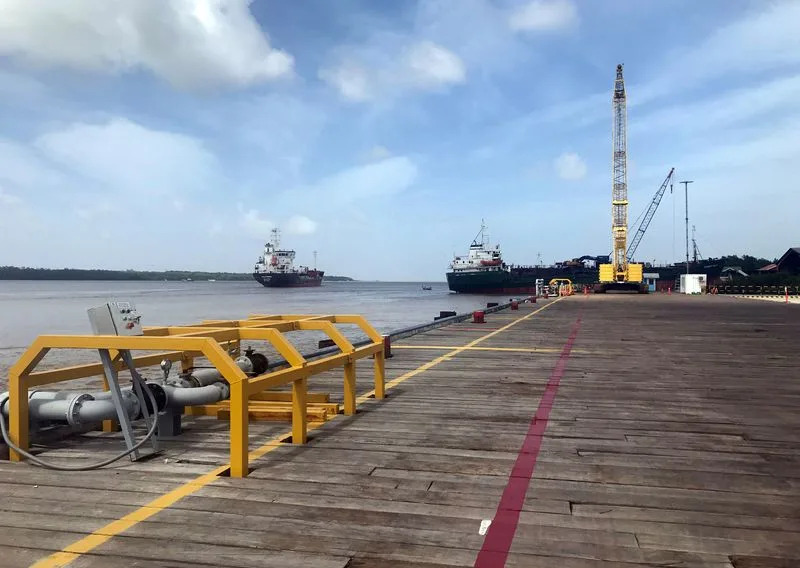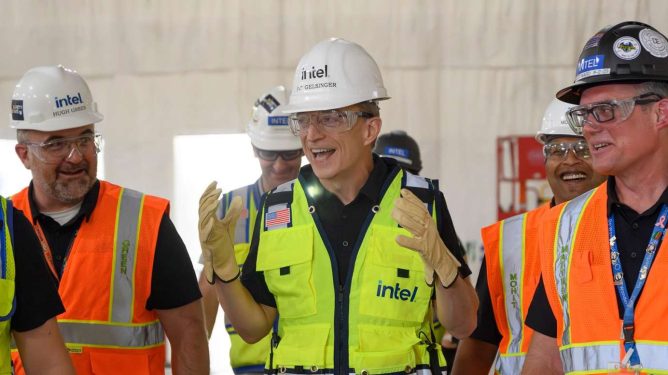To combat the devastating impact of pollution on the climate, Google and other large corporations have joined forces with a startup called Terradot. This innovative company uses rocks to trap carbon dioxide from the atmosphere, offering a promising solution for mitigating climate change.
Multimillion-Dollar Deals Brokered by Frontier
Google, H&M Group, Salesforce, and other major companies have collectively agreed to pay Terradot $27 million to remove 90,000 tons of carbon dioxide from the atmosphere. This deal was facilitated by Frontier, a carbon removal initiative led by Stripe, Google, Shopify, and McKinsey Sustainability.
Google’s Own Deal: A Significant Investment in Carbon Removal
Separately, Google announced its own commitment to purchasing an additional 200,000 tons of carbon removal from Terradot. Although the exact cost of this deal remains undisclosed, estimates suggest it could be worth up to $60 million if the price per ton is similar to the Frontier agreement.
Enhanced Rock Weathering: A Promising Strategy
Terradot employs enhanced rock weathering (ERW), a technique that accelerates the natural process of weathering rocks. Rainfall breaks down rocks, releasing calcium and magnesium, which react with carbon dioxide in the atmosphere, trapping it as bicarbonate in water. This process is naturally slow, taking thousands of years to occur; however, Terradot’s method speeds up this reaction by crushing rock into fine powder and spreading it across a large area.
Terradot’s Approach: Using Basalt to Remove Carbon Dioxide
The startup collects basalt from quarries in southern Brazil and transports it to nearby farms. Farmers can use the finely ground basalt to manage soil pH levels, while carbon removal is an added benefit. Terradot has partnered with Brazil’s agricultural research agency (EMBRAPA) to utilize this strategy on over one million hectares of land.
Challenges Ahead: Measuring Carbon Capture Effectiveness
While Google acknowledges that accurately measuring the amount of CO2 removed by Terradot’s method is challenging, they are willing to support the startup in developing more precise measurement tools. Terradot plans to assess soil samples to determine how much carbon is captured based on rock degradation over time.
Expert Opinions: A Cautionary Note
Oliver Jagoutz, a professor of geology at MIT, notes that while enhanced rock weathering has potential, it’s essential to address concerns about costs, safety, and potential delays in transitioning from fossil fuels to clean energy. "I also think why not try?" he says. "We don’t have the luxury to overthink it right now."
Context: The Importance of Emissions Reductions
Carbon dioxide emissions from fossil fuels are already exacerbating climate-related disasters like heatwaves, droughts, wildfires, and storms. Google’s own carbon footprint has grown as it builds out energy-hungry AI data centers. Developing advanced nuclear reactors and new solar and wind farms to power these facilities is a crucial step in reducing the company’s emissions.
Conclusion: Carbon Removal as a Supplement to Emissions Reductions
Google’s investment in Terradot highlights the need for both carbon removal and emissions reductions. While carbon capture technologies can help mitigate some of a company’s legacy pollution, they should not replace efforts to transition to clean energy sources. As Kanoff notes, "Any of the partners we’re even thinking about working with, they have some of the most aggressive emission reduction strategies of any of the companies really in the world."
Related Topics:
- Google’s plans for advanced nuclear reactors and new solar and wind farms
- The importance of emissions reductions to combat climate change
- Carbon capture technologies as a supplement to emissions reductions






